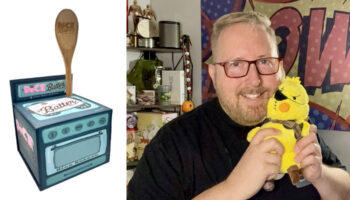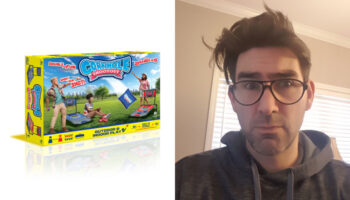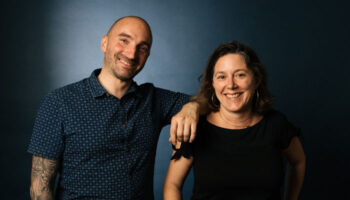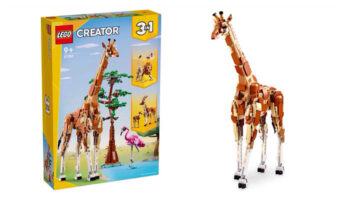Toy designer David Vonner on being a believer in ‘don’t ask for permission, beg for forgiveness!’
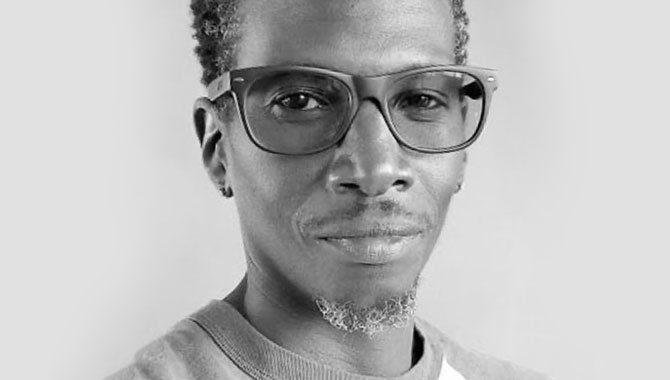
A prolific figure in the world of toys and action figures, David Vonner has worked at the biggest toy firms in the world, on some of the biggest brands around.
From designing KISS products at Spencer Gifts to working on the Marvel Legends line at ToyBiz, David also created successful lines at Hasbro, Spin Master and, most recently, at Mattel as Design Manager for WWE. He also appeared in the recent Disney+ series Marvel’s 616, discussing his work bringing Marvel characters to life for the toy industry.
Now working as an independent creative in the form of Vonner Studios, we caught up with David to find out more about his approach to toy design, how he fuels his creativity – and what he learned from working at Hasbro, Spin Master and Mattel.
Hi David. Great to catch up. Now you’re so entrenched in the toy space, it’s hard to imagine you working in any other industry… But was there a desire to do anything else?
As kid, I didn’t even think it was a career you could have. I was inspired by comic books, and adults said you can get a career in art, so I wanted to become a comic book illustrator. I started to draw and be inspired by other art forms like music, poetry and hip-hop, and even today I’m drawn to things like graffiti as a means of unlocking my mind.
In High School, I took graphic design classes and then went to my guidance councillor, but he had no clue how to become a comic book illustrator. There was place called Joe Kubert’s School of Art, and that’s where I wanted to go because it focused on comic book design. But, my mum wanted me to focus on something broader so that I had something to fall back on because – at the time – comic book illustrators weren’t paid a lot of money – unless you were a superstar like John Byrne or Bob Layton!
So you changed direction?
Yes… It was the first big disagreement between me and my mum! I grew up in Atlantic City, New Jersey – a casino town – so advertising was a major thing. She suggested I focus on graphic design in advertising and after agreeing, disagreeing and agreeing to disagree, I went to The Art Institute of Philadelphia. It was the perfect blend of art and a pathway to a career.
Was it everything you’d expected that kind of course to be?
It was a culture shock. I went to a predominantly black school and was very comfortable with the culture and the environment there, and there wasn’t many other people who expressed themselves in an artistic way like I did.
Once I got to The Arts Institute, I was a very small fish in a big ocean filled with lots of creative people that didn’t look like me. I questioned myself and I started going through the early stages of anxiety. It affected everything – my ability to create, to function in a classroom, to learn, to engage…
On one break, me and my friends were hanging out and we ended up making some very bad decisions and a friend decided to rob a gas station. It went haywire, I got arrested and was facing 10 years in jail. Fortunately, I proved I didn’t have anything to do with the crime, but then I had to pick up my life from the ground up.
Wow, that sounds like an incredibly tough time.
It was, but eventually I picked myself up and started working in the casino industry in Atlantic City. I was a dealer at the Sands Hotel casino, and my mum was the pit boss there. I earned enough money doing that to then go back to school… but then I found out I had a baby on the way.
Wow – David, so far your story has everything but a fire in the orphanage!
Ha! Well, it made me focus and get things done. On the day of my portfolio review, I had my daughter strapped to my chest – portfolio in one hand, diaper bag in the other. I was like “Give the baby a future! Let me pass!”
Ha! Did it work?
I did end up passing and graduating. A few weeks later, I saw an ad for a design position at a retail chain called Spencer Gifts. They did everything from gags, to horror gifts to rock and roll products. Its HQ was in my hometown and they were looking to start their own product development department.
I applied with a portfolio tailored to what Spencer was all about. I was 24, I went to the interview in a suit that was two sizes too big, and it was the first time my art was critiqued in an industry environment. They thought it was good and they gave me a shot!
Amazing. So this being your first taste of the toy – or gifts – space, what sort of things were you creating?
Clocks, snow globes, lava lamps, 3D wall busters, posters, cups, goblets, slippers – we did the KISS characters as bears in slipper-from! That all became the genesis for how I got ideas for toys later in my career. The slippers fed into my work on Hasbro’s Hulk Hands! Figural lava lamp work influenced how I create action figures.

So how did toys enter the scene?
Well while I was there, there was an emergence of toys designed by Todd McFarlane – McFarlane Toys. He was creating a whole new form of action figure, and a new process to create them. He was using sculptors that were coming out of art school and, like me, had grown up on comic books and cartoons and hip-hop. And the established toy design world started retiring at that time, so there was an evolution.
I left Spencer and joined Shelcore Toys, designing pre-school toys. Eight months later, I saw an ad for a designer position at a toy company called ToyBiz, which had just purchased Marvel out of bankruptcy.
I got an interview, went into the office and was amazed. The elevator door opened, I saw the big, webbed glass doors and my knees started to shake. I so wanted this! I had my interview, and a few more interviews, and then I wound up getting hired.
Me and Joe Quesada, who became editor-in-chief at Marvel, had our orientation together. We were all tasked with bringing Marvel out of the muck, and we knew could make it cool again, but we had no clue what the brand would go on to be.
Yes, it’s strange to think of Marvel being anything other than the behemoth it is today! Now if we zone in on action figures, have you seen an evolution in the design of action figures since you started out?
It’s funny, if you look at the play vs display argument… When I was a teenager, Masters of the Universe had just come out. My best friend’s older brother was really into it, and they had a wood-shop in their basement. He would cut out blocks of wood, draw MotU characters on there and then display his actual MotU figures on those blocks of wood. It was so cool. So that element of action figures being displayed, and not just used for play, is nothing new.
When I design now, I get inspired by all the things I engaged with when I was young, including those wooden blocks. My mum used to make my He-Man figure outfits – now that’s called customisation and it’s a big business!
What else inspired you when it came to designing action figures?
I was inspired by GI Joe, He-Man, my Evel Knievel Stunt set, The Six-Million Dollar Man… Comic books, of course. It’s all about tapping into the fun of your childhood and using that to create projectiles, or fresh new ways to play.
The problems you run into as a designer are when you encounter people that have lost sight of that. My view on that is – just leave the room and let the kids play! If designers play long enough, they’ll come up with something that might be great for the business.
Is it a good time to be an action figure designer?
Absolutely. There will always be the need to strip features back – form follows function… But you need to push things as much as possible to get to where you want to get to.
Look at Spider-Man in the toy industry. Over time, that action figure has evolved massively. In the early Nineties, the technology wasn’t there, the process wasn’t there and sometimes, the vision wasn’t there. But now we have everything. People are coming up with way cooler stuff.

The downside is how we pay for it. The world is changing. We have great products, but they are expensive to purchase and expensive to manufacture – in every sense of the word. When you hold an action figure, you’ve had an impact on global shipping, manufacturing, the price of oil. It all has an effect.
The other thing I’ll say on this is that it’s cool to be a creator. It’s a recognised career path now. Before, it wasn’t a ‘real job’. Now, we’re in a creative, design-led world. And that’s not just toys and games, it stretches to every sector, even the military.
From a creative point of view, is the action figure sector in a good place?
I think so. The cats are out of the bag – and I’m one of the cats! We can share, mentor and teach others to create new stuff and push things forward. Someone out there with a great idea could become the next Hasbro or Mattel.
The downside is that there’s so many movies and brands out there now and it’s being driven by a few huge companies. The fact that everything has to be tied to a license could hamper the new Mickey Mouse or new Marvel from ever making it.
Post ToyBiz, you’ve worked at some huge companies – Hasbro, Spin Master, Mattel… I imagine they all have differing creative cultures, so were you able to pick up important design lessons from your time at each one?
Each was unique, but one key thing I learnt that actually spanned all of them was the importance of creating a team within a team.
When I worked at ToyBiz, we all loved Marvel, and there only 13 of us – it was very small. Working at the bigger companies is different beast – there are so many brands and so many individuals. It’s a world, and there are worlds within worlds!
In a big company, there are going to be some corners of it that don’t fully understand a brand like Marvel, but there are also plenty that do. So those that do stick together and take ownership – it’s a case of ‘don’t ask for permission, beg for forgiveness!’
What fuels your creativity?
It’s all about immersing myself in the mind of a 13-year-old kid. I’ve still got comic books under my bed, and my workspace has always been like that too. That’s the key to it.
There’s always challenges, and not everyone is going to like what you design. Being an artist is different from being a designer. Being an artist is who you are; it’s within you. You have to learn to be a designer, and it means taking rejection and critiques. And those people being resistant are part of the process too. They don’t kill creativity; in fact they can fuel it.
Before I let you go, what are you up to now?
What I’m up to now is a direct result of Covid – and the inevitable! I got laid off from Mattel right at the start of the pandemic.
The first time I ever got laid off, I thought it was unfair. “You’re just going to give me a box for my things and tell me to kick rocks? Are you serious?” But it’s what you sign up for when you work in this animal…
The economy and retail landscape will have ups and downs and as I learned from a devasting lay-off at Hasbro, this is just part of the process when you work at major corporations – they expand and they contract with these highs and lows.
In a creative job, you wear a lot of hats. You could be brainstorming, then meeting with legal, then reading scripts, then working on packaging, then art directing – all kinds of stuff! So I thought why not lean into all of those different skill-sets, strengths and relationships, away from that structure? So now, if you want to collaborate, let’s do it and make something happen.
How can people reach out?
I’m so accessible! It’s @DavidVonner on Instagram, Facebook and Twitter, and my email is [email protected]. Reach out!
To read more about David’s thoughts on brands, licensing and Marvel, check out part two of the interview over on our sister-site, Brands Untapped, by clicking here.
—
To stay in the loop with the latest news, interviews and features from the world of toy and game design, sign up to our weekly newsletter here





